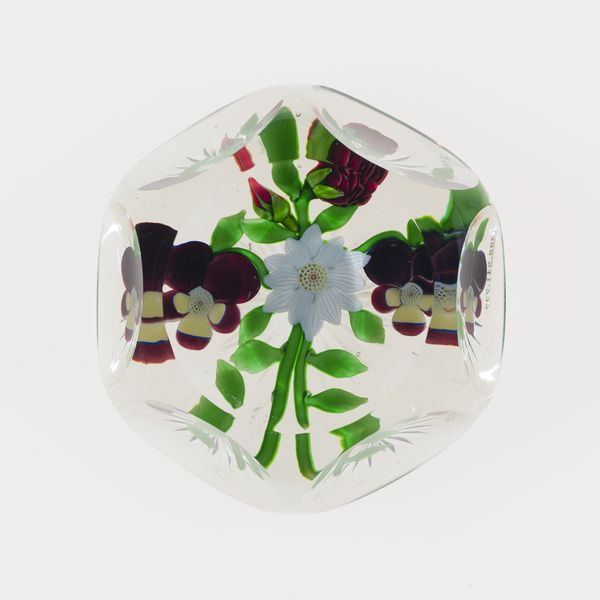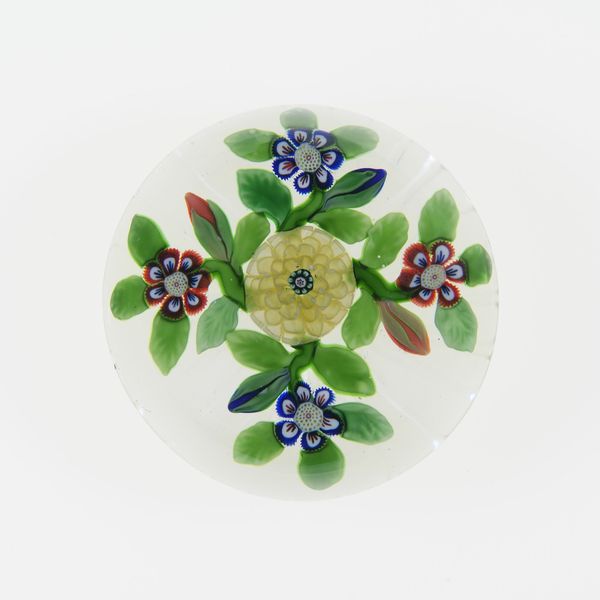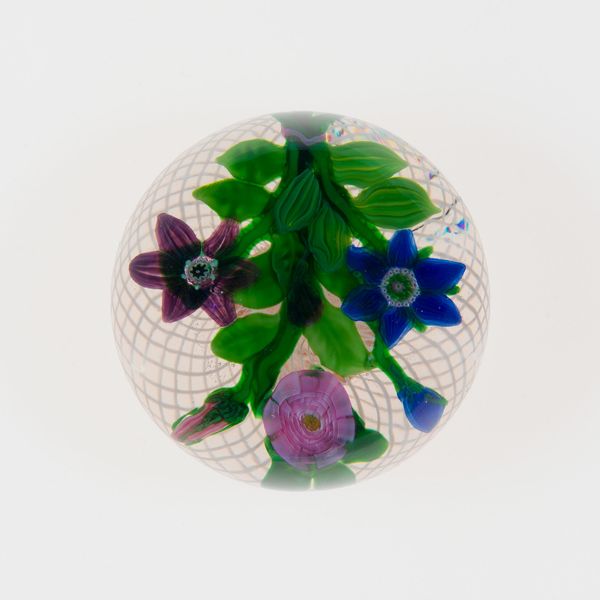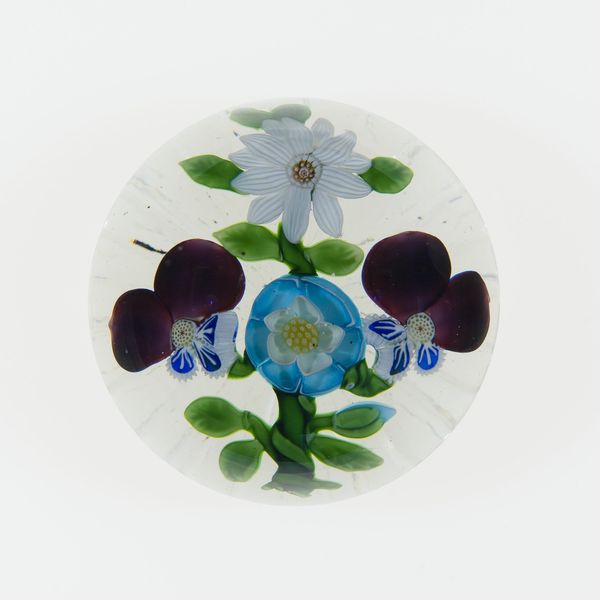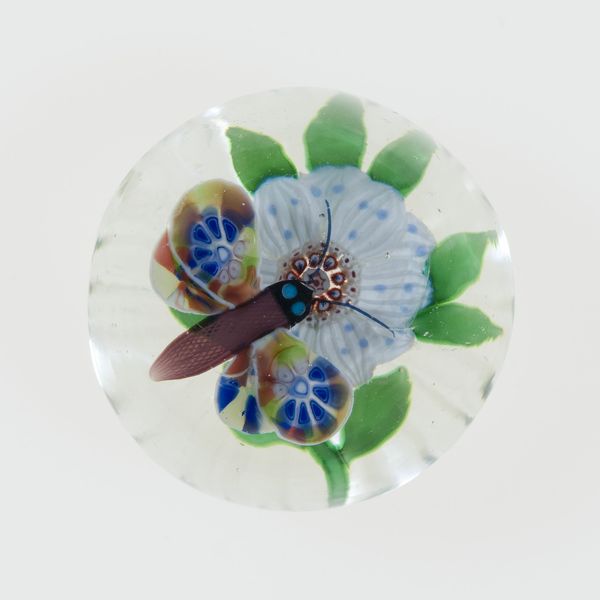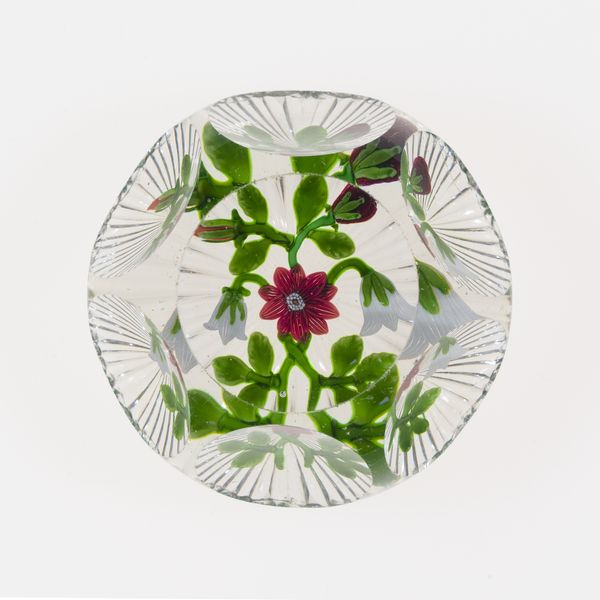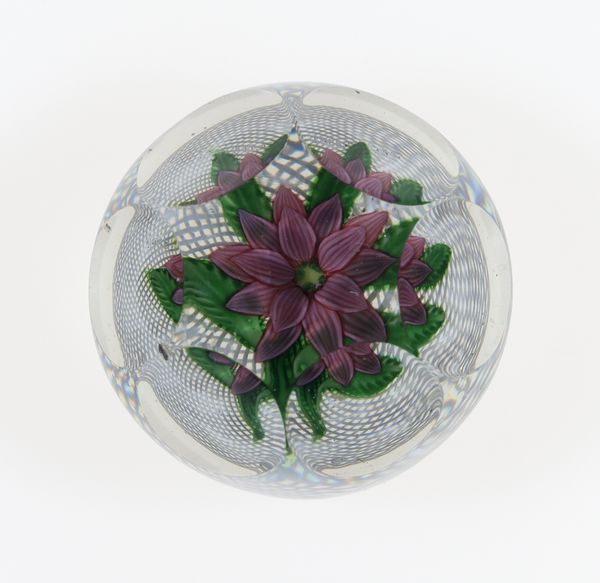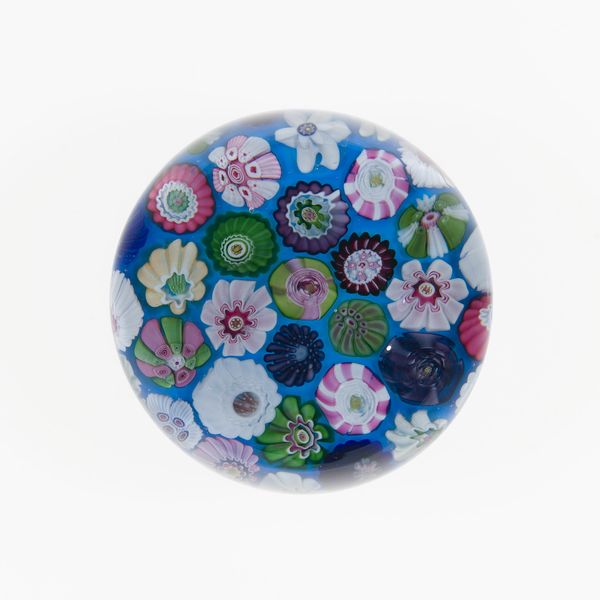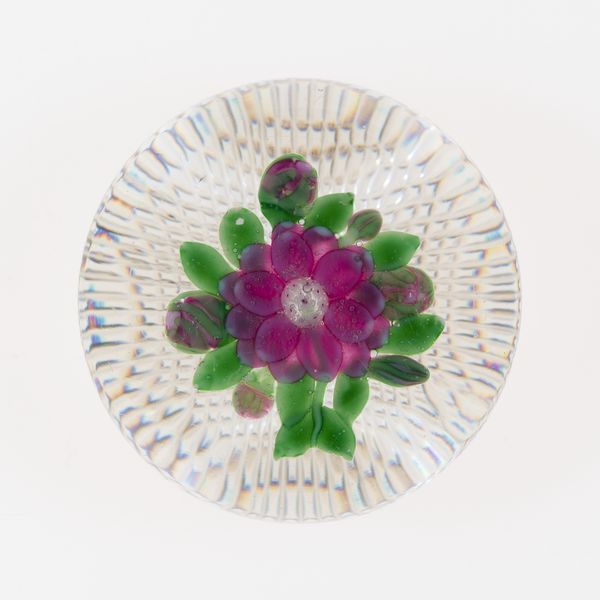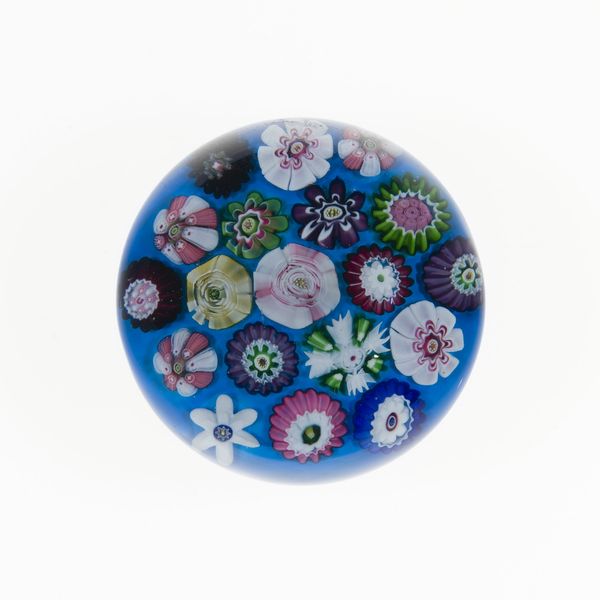
paper, glass
#
paper
#
glass
#
decorative-art
#
miniature
Dimensions: Diam. 8.3 cm (3 1/4 in.)
Copyright: Public Domain
Editor: This is “Paperweight,” created by Baccarat Glassworks around 1845-1860, made from glass and paper. It's so delicate and ornate. What do you see in this piece, considering the time it was made? Curator: It’s interesting to consider its creation within the rise of industrialization. Mass production allowed for items like this to become more accessible to a burgeoning middle class, who sought objects that projected taste and refinement. Were paperweights solely functional or also status symbols? Editor: That’s a good point. I hadn't thought of that. Were paperweights displayed prominently? Curator: Often, yes. Consider how domestic spaces were curated at the time. Displaying carefully chosen objects was a way to project an image of cultural literacy and upward mobility. Think about the burgeoning department stores; these provided an arena for purchasing such symbolic items. This paperweight reflects Victorian-era ideals of domesticity. What effect might it have when juxtaposed alongside images depicting urban life and factory work? Editor: I guess it emphasizes the sharp contrasts in society then. We tend to think of the Victorians as uniform but it sounds like their society was also in flux. Curator: Precisely. So a seemingly innocent item reflects the anxieties and aspirations of a society grappling with massive changes. Looking closely changes everything. Editor: Definitely! I appreciate you helping me understand this work through a cultural lens; I see it much differently now. Curator: And I value the chance to see an item of its time given new life by each generation.
Comments
No comments
Be the first to comment and join the conversation on the ultimate creative platform.
